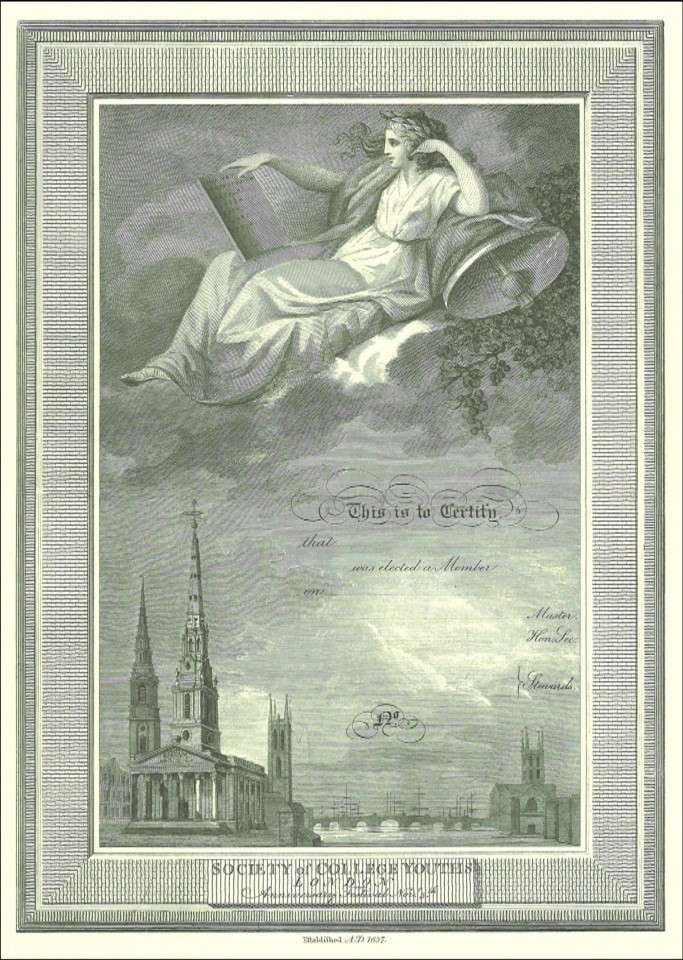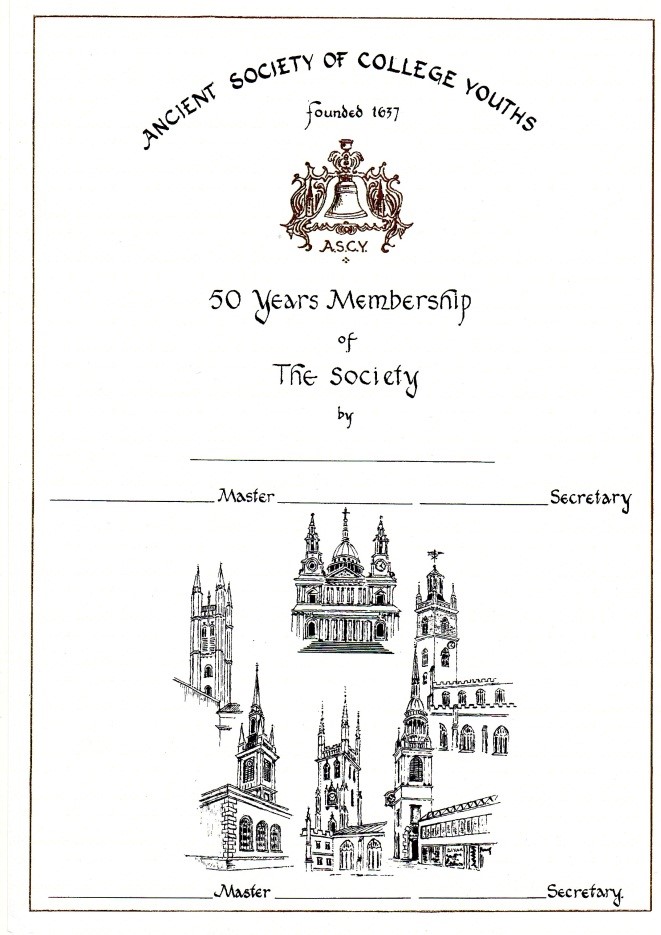|
|
This catalogue lists the membership certificates of the major territorial and other ringing organisation where known. It represents an initial attempt to capture examples of these certificates together with something about their history. Inevitably, the preparation of the catalogue will hopefully encourage more research and interest with further examples coming to light consequently. This collection should not therefore be seen as comprehensive but later editions will hopefully progress to something more complete.
|
| Certificate | History | Detail |
|---|
| Main membership certificate | Like many organisations of the time the influx of ringers from lower social classes led to a split in the Society around 1756. For a short while there were two discrete groups - the older ringers formed the Ancient Society of College Youths while the newer influx continued to use the original society name, often being referred to as the Junior Society. At the time a single society emerged around 1788 it was agreed to commission a new annual feast ticket from the eminent designer Francesco Bartolozzi. The engraved plate cost 15 guineas at the time (i.e. £15.75 - a considerable sum in those days) and 300 copies of the ticket were printed at a further cost of £1-19s-0d (i.e. £1.95). The Society still holds the original copper plate used for printing these tickets. The engraved plate was adopted later for use as the membership certificate. |  | | 50 years membership certificate | Designed by George Pipe in 2007. Copy of the original artwork is held in the College Youths' Library. |  |
|
The Society Membership Certificate catalogue was compiled by Chris Ridley from various sources. Many of the new societies which were established following belfry reform issued certificates to ringers who joined to encourage participation. The design of many early certificates consequently reflect the style of those times, but over the years designs have been modernised to reflect the period in which they were produced. This has been accompanied by the move to standardised sizes based around the A4 (21cm by 30cm) standard, rather than much larger certificates sometimes found in earlier periods. Recent years have also seen a move away from professionally printed certificates to designs generated from computers.
Society minutes can provide further information on the background to the variety of certificates found for some societies. Occasionally the date recorded for a member on a particular example can predate the introduction of that certificate design suggesting this will be the date of election to the society. As such recorded dates are not a reliable tool for dating certificates although it does of course give an indication. Some certificates also carry a membership number for certain societies where such records are maintained.
There are other items that while not strictly membership certificates, are of interest. These have been added to provide a wider perspective and as they are unlikely to be captured elsewhere.
|
